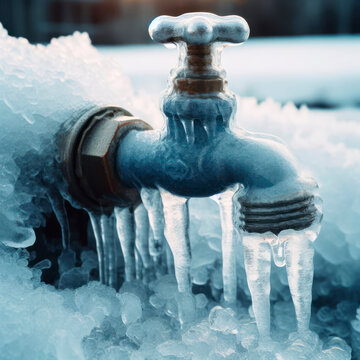They are making several good pointers about How To Avoid Freezing Pipes as a whole in the article below.

Winter can ruin your plumbing, specifically by freezing pipes. Right here's exactly how to avoid it from occurring and what to do if it does.
Intro
As temperatures decline, the danger of icy pipelines boosts, possibly leading to pricey fixings and water damage. Comprehending exactly how to stop frozen pipes is critical for home owners in chilly environments.
Recognizing Icy Pipes
What triggers pipes to freeze?
Pipelines ice up when exposed to temperatures below 32 ° F (0 ° C) for prolonged durations. As water inside the pipes ices up, it increases, taxing the pipeline walls and possibly triggering them to burst.
Risks and damages
Icy pipes can bring about water supply disruptions, property damages, and expensive repairs. Burst pipelines can flooding homes and cause considerable structural damage.
Indications of Frozen Pipes
Determining icy pipelines early can stop them from breaking.
Exactly how to recognize frozen pipes
Try to find lowered water circulation from taps, unusual smells or sounds from pipelines, and visible frost on exposed pipelines.
Prevention Tips
Shielding prone pipes
Wrap pipelines in insulation sleeves or use warm tape to secure them from freezing temperatures. Concentrate on pipelines in unheated or exterior areas of the home.
Heating strategies
Maintain indoor areas properly warmed, particularly areas with plumbing. Open up cupboard doors to allow cozy air to flow around pipelines under sinks.
Shielding Outdoor Plumbing
Yard hose pipes and outside faucets
Separate and drain garden pipes prior to wintertime. Set up frost-proof spigots or cover outdoor taps with shielded caps.
What to Do If Your Pipes Freeze
Immediate actions to take
If you presume icy pipes, keep taps open up to relieve pressure as the ice thaws. Use a hairdryer or towels soaked in hot water to thaw pipes slowly.
Long-Term Solutions
Architectural modifications
Think about rerouting pipes away from exterior wall surfaces or unheated locations. Include additional insulation to attics, cellars, and crawl spaces.
Updating insulation
Invest in top quality insulation for pipelines, attics, and walls. Proper insulation aids maintain regular temperatures and minimizes the danger of icy pipelines.
Final thought
Stopping icy pipes requires proactive actions and fast feedbacks. By comprehending the reasons, indications, and preventive measures, home owners can secure their plumbing during winter.
5 Ways to Prevent Frozen Pipes
Drain Outdoor Faucets and Disconnect Hoses
First, close the shut-off valve that controls the flow of water in the pipe to your outdoor faucet. Then, head outside to disconnect and drain your hose and open the outdoor faucet to allow the water to completely drain out of the line. Turn off the faucet when done. Finally, head back to the shut-off valve and drain the remaining water inside the pipe into a bucket or container. Additionally, if you have a home irrigation system, you should consider hiring an expert to clear the system of water each year.
Insulate Pipes
One of the best and most cost-effective methods for preventing frozen water pipes is to wrap your pipes with insulation. This is especially important for areas in your home that aren’t exposed to heat, such as an attic. We suggest using foam sleeves, which can typically be found at your local hardware store.
Keep Heat Running at 65
Your pipes are located inside your walls, and the temperature there is much colder than the rest of the house. To prevent your pipes from freezing, The Insurance Information Institute suggests that you keep your home heated to at least 65 degrees, even when traveling. You may want to invest in smart devices that can keep an eye on the temperature in your home while you’re away.
Leave Water Dripping
Moving water — even a small trickle — can prevent ice from forming inside your pipes. When freezing temps are imminent, start a drip of water from all faucets that serve exposed pipes. Leaving a few faucets running will also help relieve pressure inside the pipes and help prevent a rupture if the water inside freezes.
Open Cupboard Doors
Warm your kitchen and bathroom pipes by opening cupboards and vanities. You should also leave your interior doors ajar to help warm air circulate evenly throughout your home.

Do you like reading up on Winter Plumbing Precautions: Preventing Frozen Pipes? Place a remark directly below. We would be pleased to hear your opinion about this blog post. Hoping to see you back again soon. Are you aware of another person who is truly interested in the subject? Be sure promote it. We enjoy reading our article about Preventing and dealing with frozen pipes.
Click Here
Comments on “Preventing Frozen Pipes: Top Methods for Winter”